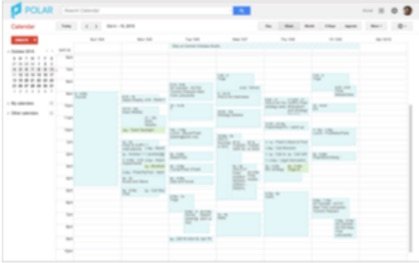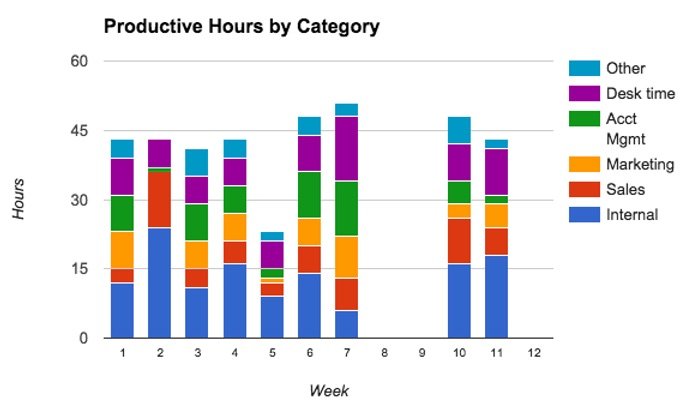My First Time Audit
Over the winter break, amidst much reflection on the year that was and getting ready for the year that may, the question arose: where am I spending my time? Determined to come up with a clear answer, I decided to audit my time.
How I used to audit my time
One of my early advisors once shared with me his best practice on this topic. Start by taking a piece of paper and make a vertical line down the middle. On the right-hand side of that line, first list the areas you want to be spending your time on. Then on the left, the areas you are actually spending your time on. And finally, draw horizontal lines to connect words on the left-side that match on the right-side. What we naturally will see from this exercise is that there are areas on the right (things we want to be spending our time on) that don’t appear on the left. And there are areas on the left (where we actually spend our time) that do not appear on the right. This simple self awareness practice has helped me a lot over the years.
A new data-informed exercise
Data was at the center of this exercise. Data is what allows us to question our biases and preconceived notions.
Enter my calendar. It knows more about my time than I do. And here’s the beauty of the calendar: it does not lie and fall prey to any of my biases. My calendar is used to schedule everything, and my days (probably like yours) are divided up into 30 or 60 minute chunks.
Here is a typical week for my calendar:
Thinking about how to categorize my time, I identified six buckets:
Internal (Internal meetings)
Sales (Prospect meetings, sales outreach)
Marketing (Events, research, press calls)
Acct Mgmt (Customer meetings)
Desk time (Email, Slack, planning, document review)
Other (Board, HR interviews, partnership meetings)
Then using my calendar, I went back over Q4, week-by-week, and recorded an estimate of the # of hours per category per week in a simple spreadsheet. The resulting table looked like this:
Also included was the city I was in that week and the weeks I had time away (personal, vacation, etc.) had no time recorded. Travel time (flights, taxis), breaks, social plans or lunches were not included. The focus was on recording productive hours.
What I learned
Here is visually where I spent my time over the past quarter:
I was surprised with the analysis. Even though I consider myself to be fairly self-aware, this exercise was humbling. 33% of my time was spent in internal meetings, far more than I would have guessed. This was a trigger for the experiment we are running at Polar, called making time to make, where we have introduced internal meeting guidelines that also include 2 days per week with no internal meetings.
Desk time is something I underestimated, and even though it’s all grouped as one chunk of time, this is a mix bag of so many different activities. It caused me to ask myself, ‘how do I prioritize my desk time?’. Desk time represented approx. 72 productive hours of my time in Q4.
The power of intention
As a further experiment, I am setting a clear intention for where I would like to spend my time in Q1. The intention is ambitious given it involves changes, but I do believe that there is power in being clear on our intention and that subconsciously will influence day-to-day actions.
Do it yourself
In case you are wondering, this time audit took less than 1 hour to complete and if you are interested in doing this yourself, here is my template that you are free to copy. If you have someone who helps manage your calendar, even better, delegate this to him or her.
Final thought
The purpose behind this exercise is to increase my awareness. In our always connected, globally competitive business culture, leaders now more than ever need to be aware and mindful of ourselves. I think it starts with our time, and where we choose to spend it.





